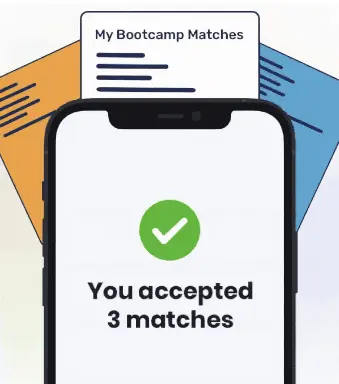Game designers use a mix of creativity and technical skills to create immersive and enjoyable video and computer games. Careers in this competitive industry can be highly sought after, and the positions for game designers are limited. Game apprenticeships are a great way to gain hands-on experience and lay the groundwork for a successful career.
Game design internships and apprenticeships combine classroom education with on-the-job training to ensure candidates become highly-skilled professionals. In this article, we show you the best game design apprenticeships and walk you through the training options at your disposal to gain access to these programs.
What Is a Game Design Apprenticeship?
A game design apprenticeship allows you to work alongside design professionals while developing in-demand skills and industry knowledge. These programs are generally paid positions and may last anywhere from six months to two years.
The key benefit of an apprenticeship is the structured blend of learning and working. Apprentices gain technical expertise while also developing workplace soft skills, such as communication and teamwork. Ideally, the program transitions smoothly into a full-time role upon completion.
While apprenticeships are more common in the UK and Europe, most U.S. opportunities take the form of internships. These also provide mentorship, project experience, and compensation, but are usually shorter in duration.
What Does a Game Design Apprentice Do?
As a game design apprentice or intern, you’ll:
- Work under the supervision of senior designers and developers
- Learn from a mentor who coaches you in industry-standard techniques
- Contribute to real projects that may be part of a published game
- Develop creative and technical skills, as well as soft skills like planning, communication, and problem-solving
Apprentices often rotate through different aspects of development, giving them exposure to design, testing, art, animation, and even entrepreneurial aspects of game production.
Types of Game Design Apprenticeships
There are many possible career tracks within the game industry. Apprenticeships and internships can help you prepare for roles such as:
Game Animator
Multimedia artists who specialize in bringing characters and environments to life using 2D and 3D techniques. Apprentices learn body movement principles, animation software, and database management.
Sound Designer
Audio engineers who create sound effects, music, and dialogue tracks. Apprentices gain experience using commercial sound libraries and digital audio workstations (DAWs).
Game Designer
The “architects” of games, responsible for mechanics, storylines, and user experience. Apprentices help create flow charts, mockups, and level designs.
Game Artist
Visual creators who design the look and feel of game environments, objects, and characters. Apprentices sketch concepts, apply textures, and assist with promotional materials.
Game Tester
Quality assurance professionals who play games at different stages of development to spot bugs and recommend improvements. Apprentices gain insight into production cycles and usability testing.
Apprenticeship & Internship Opportunities
Here are some of the well-known apprenticeship and internship programs in game design today (retrieved August 2025):
| Company | Program & Details |
|---|---|
| Sony PlayStation (SIE) | Offers paid internships through its Early Careers program. Interns work in areas such as game design, art, programming, and animation. Programs last around 12 weeks and include mentorship, executive access, and project work.¹ |
| Riot Games | Provides internships in game design, art, UX, and more through its University Programs. Interns are treated like full-time employees, with competitive pay and, in some cases, relocation or housing assistance. Applications typically open each September for U.S. summer programs.² |
| Epic Games | Runs paid internships lasting 12–16 weeks in design, programming, animation, and production. Interns work alongside mentors on projects using Unreal Engine and other tools.³ |
| Activision | Offers summer internships across departments such as design, animation, art, and engineering. Programs last 12 weeks and are open to bachelor’s, master’s, and PhD students.⁴ |
| Sumo Digital Academy (UK) | Offers a Level 7 Game Programmer Apprenticeship lasting 12–24 months, designed for beginners who show potential. Apprentices train in C++ and Unreal Engine while contributing to published titles.⁵ |
Game Design Apprenticeship Salary & Job Outlook
Compensation for game design apprenticeships and internships varies widely depending on the role, location, and employer. According to ZipRecruiter (August 2025), the average game designer earns about $72 per hour, which translates to roughly $149,000 per year.⁶ Most salaries fall in the range of $47,000 to $156,000 annually, with a base average of $149,118.6 In some markets, the numbers are even higher. For example, in New York City, video game designers earn an average of $163,140 per year, or more than $78 per hour.7 Freelance game designers, meanwhile, tend to earn less but maintain greater flexibility, averaging around $48 per hour.8
Because “game designer” is not a distinct occupation tracked by the Bureau of Labor Statistics (BLS), it’s also useful to look at comparable fields for context. The closest BLS category, Special Effects Artists and Animators, reported a median annual wage of $99,800 in May 2024.9 Within the broader software development industry, salaries are even higher. The BLS notes that software developers earned a median wage of $133,080, while quality assurance analysts and testers earned $102,610 during the same period.¹0
While these figures suggest that professionals who move from apprenticeships into permanent roles in the industry may find strong prospects, it is important to note that pay varies by specialization and outcomes vary.
The job outlook for game designers and related roles remains positive. While competition for creative positions is intense, the continued expansion of the entertainment and technology industries is fueling demand for skilled professionals. The BLS projects steady growth for both animators and software developers, driven by the increasing need for interactive media and gaming experiences.10 Apprenticeships and internships not only offer valuable training but also give candidates the practical project experience that employers prioritize, making them one of the best ways to secure a long-term career in the field.
Salary figures are estimates from third-party sources and may vary. Outcomes depend on role, employer, and location.
Game Design Apprenticeship Requirements
Most game design apprenticeship programs require some knowledge of coding and a passion for creating games. You will likely need to create a resume and cover letter, and you may need to pass an aptitude or skills test. Many game apprenticeship and internship programs require you to be currently enrolled in a degree program.
Some apprenticeships may have stricter requirements, such as being proficient in a specific programming language like C++ or Java. It is a good idea to check the company’s website to read more about the requirements for a video game design program before you apply.
How to Get a Game Design Apprenticeship
The best way to find a game design apprenticeship is by visiting online job boards. However, competition may be fierce, so you need to make sure you stand out as a candidate. Here are a few options to consider to increase your chances of landing that coveted apprenticeship.
Coding Bootcamps
Many game companies offering apprenticeship and internship opportunities tend to look for individuals with some game design experience. One way to quickly pick up such skills is by enrolling in a bootcamp program. Bootcamps are short but intensive educational programs designed to equip students with the technical skills needed to join the workforce.

"Career Karma entered my life when I needed it most and quickly helped me match with a bootcamp. Two months after graduating, I found my dream job that aligned with my values and goals in life!"
Venus, Software Engineer at Rockbot
The game design courses you find at a coding bootcamp can be completed in three to eight months. This means that in a matter of months, you’ll be ready to apply for an apprenticeship. In addition, the best game design bootcamps offer robust career support, including access to a network of hiring companies and one-on-one mentorship.
Internship
The difference between an internship and an apprenticeship is subtle but important. The most significant difference is that apprenticeships have a stronger focus on on-the-job training, with the goal being to master the skills needed for a particular role. Internships, by contrast, tend to focus on general entry-level tasks. Internships tend to be shorter too.
Completing a game design internship will put you in a stronger position to apply for an apprenticeship in the game industry. Above, we’ve also covered a few internships. Consider completing one of these programs before applying for a longer and more comprehensive apprenticeship.
Vocational Training
Vocational training refers to postsecondary education designed to prepare individuals for employment in specific occupations. The term can encompass many types of programs, from courses found in online learning platforms like edX or Coursera to programs offered by vocational and technical schools.
Although you can join courses online that will further your video game design education, you may have a harder time finding more exhaustive programs that equip you with the skills needed to join the industry. Vocational schools may have computer science or IT programs, but they are unlikely to offer courses that focus solely on game development or game design.
Is a Game Design Apprenticeship Worth It?
Yes — a game design apprenticeship is worth pursuing if you want structured entry into the industry. In just six months to two years, you’ll:
- Acquire professional-level technical skills
- Gain practical experience working on real projects
- Build a portfolio that demonstrates your abilities
- Network with industry professionals
Because video game development is highly competitive, apprenticeships and internships are among the best ways to get your foot in the door.
Game Design Apprenticeship FAQ
Most U.S. internships last 10–12 weeks, while structured apprenticeships in the UK run 12–24 months, depending on level and specialization.
Yes. Roles such as narrative designer, UX researcher, or concept artist don’t require coding. However, knowledge of programming languages like C++ or Python, or familiarity with engines like Unity, significantly improves your career prospects.
Yes. It’s a competitive field, but apprenticeships and internships provide a structured entry point. Building personal projects and maintaining a strong portfolio can help you stand out.
To prepare apprentices with both technical and creative skills, including level design, storytelling, user interface design, 3D modeling, and shading, while giving them professional experience in a collaborative environment.
Sources
- https://careers.playstation.com/early-careers
- https://www.riotgames.com/en/university-programs
- https://www.epicgames.com/site/en-US/earlycareers
- https://careers.activision.com/students
- https://www.sumo-academy.com/game-programmer-apprenticeship
- https://www.ziprecruiter.com/Salaries/Game-Designer-Salary
- https://www.ziprecruiter.com/Salaries/Game-Designer-Salary–in-New-York
- https://www.ziprecruiter.com/Salaries/Freelance-Game-Designer-Salary
- https://www.bls.gov/ooh/arts-and-design/multimedia-artists-and-animators.htm
- https://www.bls.gov/ooh/computer-and-information-technology/software-developers.htm
About us: Career Karma is a platform designed to help job seekers find, research, and connect with job training programs to advance their careers. Learn about the CK publication.

